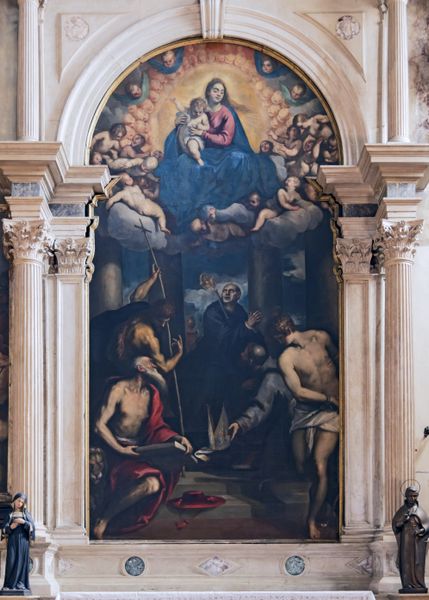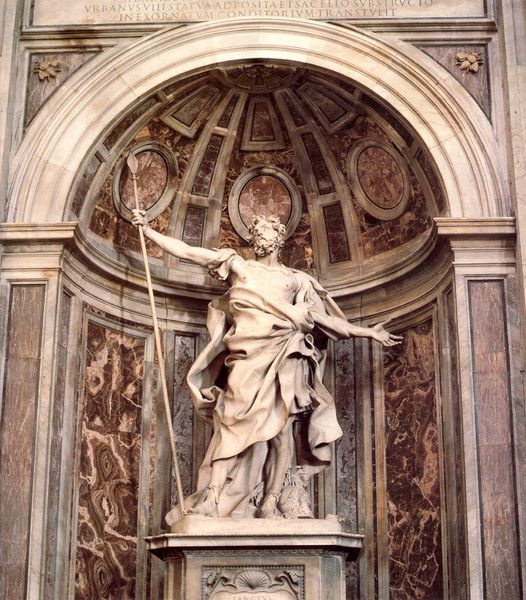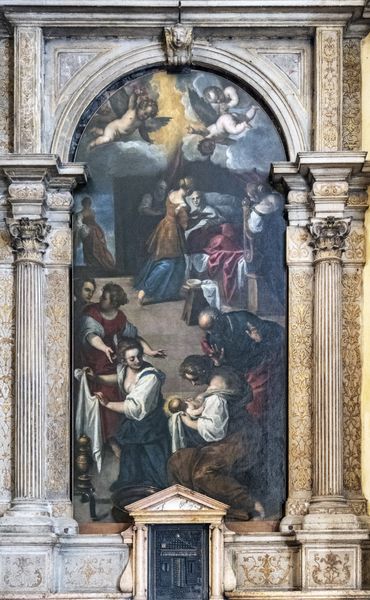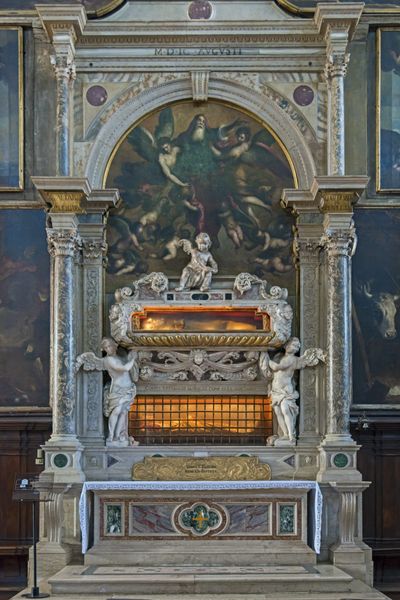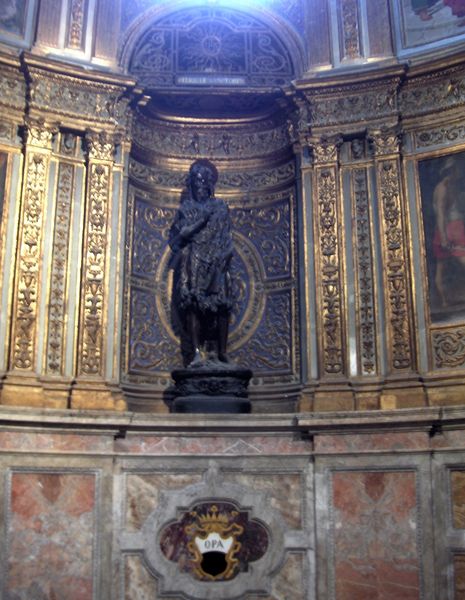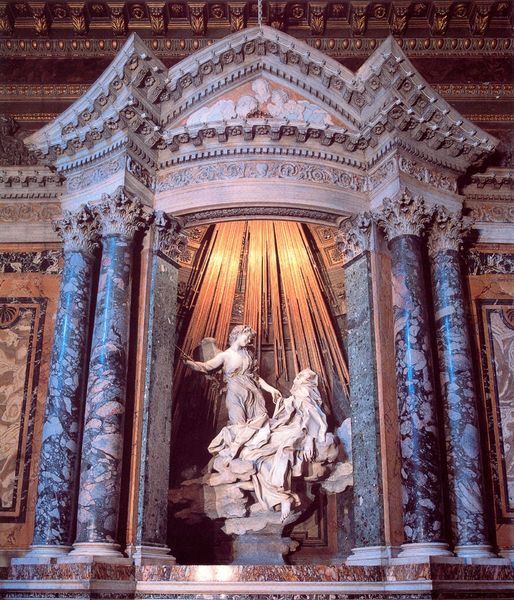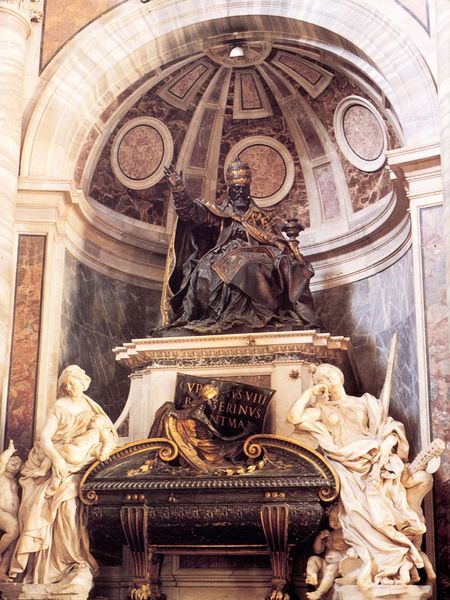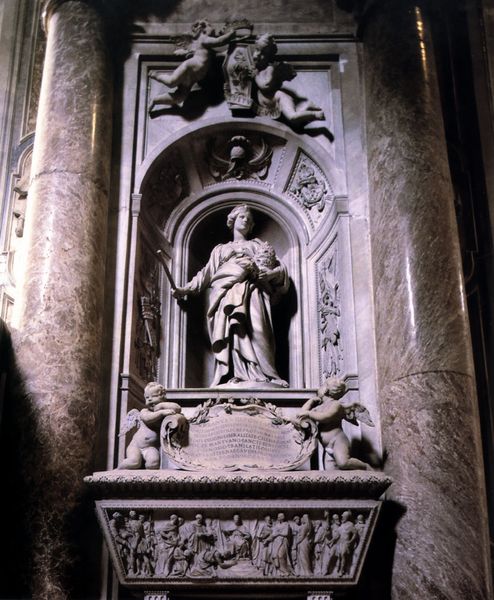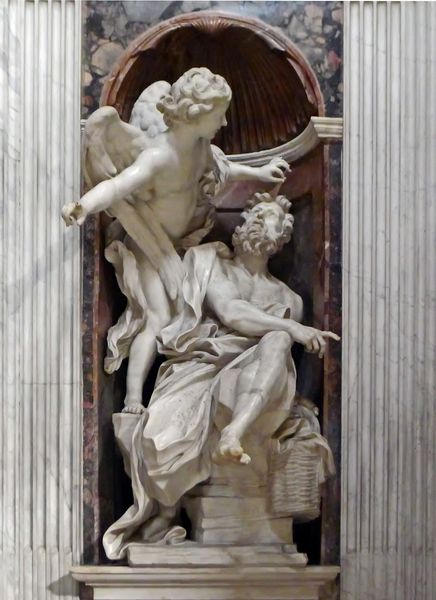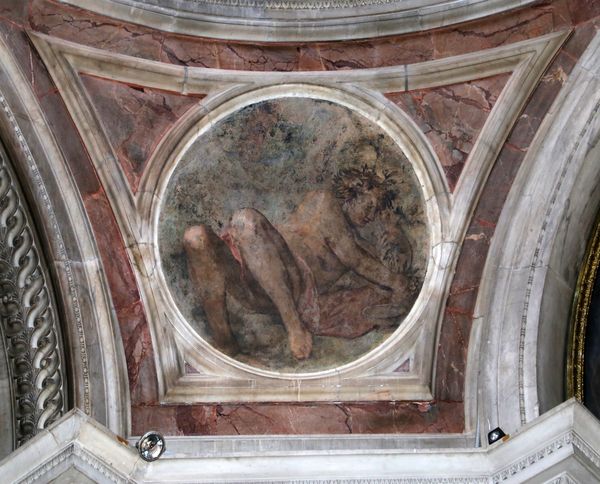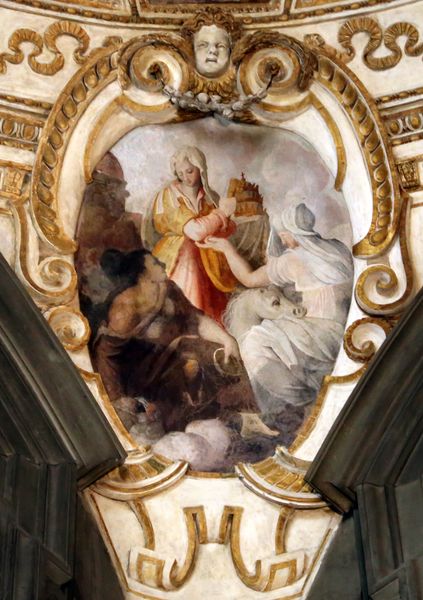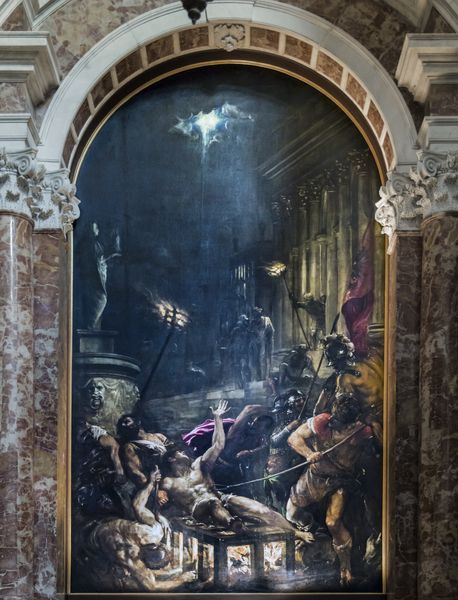
carving, painting, gold, alabaster, fresco, marble, architecture
#
carving
#
baroque
#
painting
#
structure
#
sculpture
#
gold
#
alabaster
#
holy-places
#
figuration
#
fresco
#
11_renaissance
#
history-painting
#
marble
#
architecture
Copyright: Public domain
Curator: What strikes me immediately is the architectural grandeur enveloping this depiction of the dead Christ. Editor: Yes, it's a visceral tableau, isn't it? A raw portrayal of death set within a rigid, almost triumphant structure. Is this Palma il Giovane's "Altar maggiore e Cristo morto" from 1605? The painting itself seems almost secondary to its marble and gold surroundings. Curator: Indeed, it is. Palma il Giovane's work is so intertwined with the architecture that it functions almost as a complete theatrical staging. How does that framing resonate for you? Editor: I'm compelled by the contrast. The cold marble and rigid architectural setting amplify the vulnerability of the deceased Christ. His limp form speaks volumes against this opulent backdrop. There's a power dynamic there that raises questions about institutional authority over individual suffering. Curator: That's a compelling reading. The Baroque period frequently utilized such contrasts to evoke emotional responses. Consider the cultural climate of the Counter-Reformation. Religious art became increasingly grandiose, attempting to reinforce the church's power amid rising Protestantism. Palma was an essential player in that movement. Editor: Absolutely. It also speaks to the visual language of power, the way dominant institutions like the church can commandeer narratives of pain and resilience, subsuming them in grand, impenetrable edifices. Are we really mourning the dead, or celebrating an unassailable dominance? Curator: A provocative point. While it may feel somewhat cynical, understanding the role of the church and the families that were supporting Palma during the period reveals precisely that confluence of spiritual and temporal authority. Editor: Ultimately, that tension between human vulnerability and imposed authority remains strikingly relevant today. Art like this invites critical engagement with the power structures that continue to shape our world. Curator: It reminds me that art is not produced in a vacuum but shaped by, and shaping, history. Editor: Leaving us, hopefully, more attuned to the social forces still at play within any artwork.
Comments
No comments
Be the first to comment and join the conversation on the ultimate creative platform.
